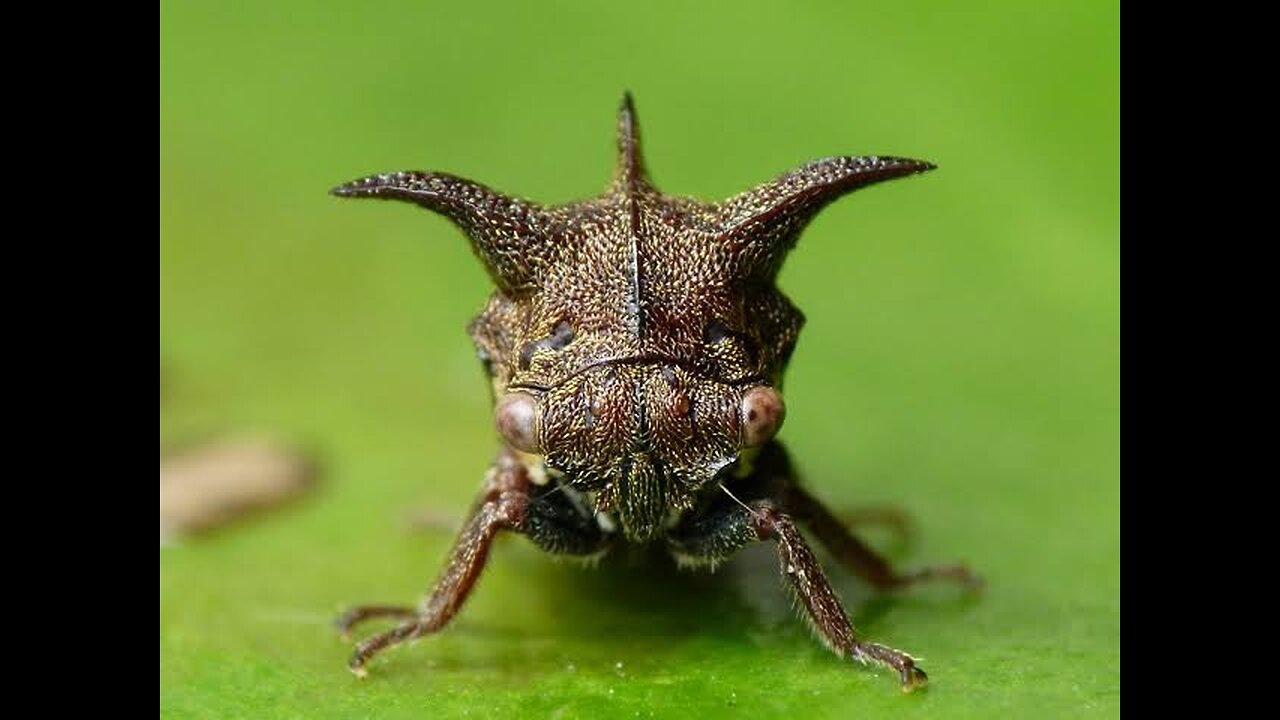Premium Only Content

INSECTS
Today, thankfully, we live in a world where dinosaurs and the dreaded Tyrannosaurus Rex have been reduced to nothing more than bugs and scurrying reptiles. Perhaps it's an evolution we take too casually, or maybe we’ve never truly grasped what real terror looked like. But if you're curious, if you dare - grab a microscope and summon your wildest dreams from the underworld of leaves and stems. Welcome to the secret kingdom of TREEHOPPERS.
These creatures, members of the family Membracidae, are close relatives of cicadas and leafhoppers. Found on every continent (except the frozen stretches of Antarctica), they make up the second-largest family within the hemipteran order. Yet, in all their global reach, most individual treehoppers live for just a few months. In that short life, they quietly suck plant sap from shrubs or trees. Sigh, at least, you know a safe location in any case the little monsters ever rise again.
What truly sets them apart from their leafhopper cousins is their armor—the enlarged (pronotum), that shield-like extension right behind the head, arching back to cloak their abdomen. Sometimes it mimics a thorn, other times a gnarl or wart on a twig. It’s nature’s finest illusion. While leafhoppers are sleeker, with rows of tiny spines on their hind legs and tapered bodies, treehoppers embrace the strange, the surreal, the spectacular.
Surprisingly, unlike many sap-sucking insects, treehoppers aren’t overly pestiferous. In fact, they’re often more threatened than threatening. Ironically, it is not human hands that threaten their reign, but their fellow ancestral line, the ruthless assassin bugs - creatures that stir the heart of any biocontrol enthusiast.
But even in this world of miniature warfare, there’s harmony. They say “teamwork makes the dream work” - Just like the common phrase by the legendary afrobeat artist Davido, “we rise by lifting others.” True to that spirit, some species of treehoppers have entered into mutual alliances with bees. In return for a sweet drop of honeydew, the bees offer protection. Together, they fend off danger, proving that survival often comes not from strength, but from connection.
So next time you stroll through the greenery, remember: the monsters of yore may now be microscopic, but their legends are alive - etched in thorns, whispered in wings, and thriving in the hidden corners of the world.
-
 LIVE
LIVE
SavageJayGatsby
3 hours agoLet's Play: Pacific Drive || $300 Weekly Goal - Spicy Bite Saturday || Teen Drinkin is Very Bad
35 watching -
 LIVE
LIVE
blackfox87
2 hours agoWe Back Baby!! | PREMIUM CREATOR | #DisabledVeteran
116 watching -
 LIVE
LIVE
MadHouse_
1 hour agoFinsihing up the Main story and then some DLC.
27 watching -
 1:41:06
1:41:06
vivafrei
6 hours agoTrump Changing Tune on Operation Warp Speed? CBC Promoting Propaganda? Shiloh Hendrix Update & MORE!
184K97 -
 LIVE
LIVE
The Mike Schwartz Show
3 hours agoTHE MIKE SCHWARTZ SHOW Evening Edition 09-01-2025
93 watching -
 46:25
46:25
The Quartering
8 hours agoMeta PC Winner, Trump Ruins Libs Dark Fantasy & Raja Jackson Case Heats Up!
135K61 -
 5:35:58
5:35:58
StoneMountain64
6 hours agoNew Missions for Battlefield 6 Unlocks (+New Mouse and Keyboard)
40.3K1 -
 2:09:47
2:09:47
Nerdrotic
11 hours ago $6.72 earnedHollywood's Long Dark Summer of the Soul - Nerdrotic Nooner 511
77.4K6 -
 1:36:05
1:36:05
Side Scrollers Podcast
8 hours agoStreamer ATTACKS Men Then Cries Victim + Pronoun Rant Anniversary + More | Side Scrollers
59.6K -
 12:06
12:06
Liberty Hangout
2 days agoDemocrat Woman Can't Define 'Woman'
72K91